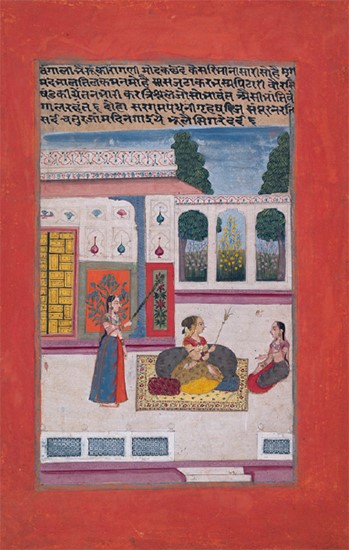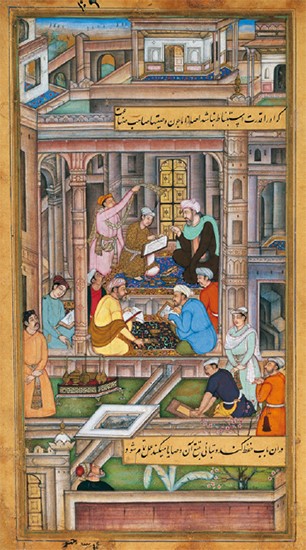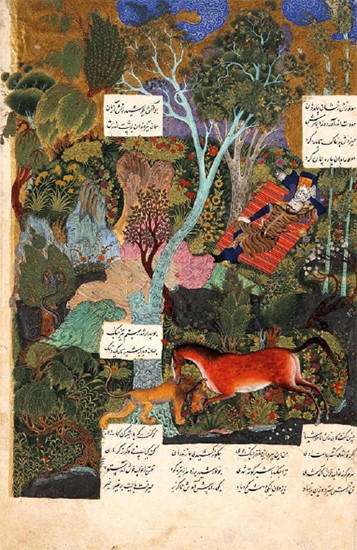In one early eighteenth-century miniature from Rajas-than, used to illustrate a ragmala (a poem, consisting of twelve verses), we get to see saffron do triple duty, not only as a colorant, but as a fixative to the greenish hues and as part of the poetic mode of the depicted scene:
Her sari, soaked with kesara [saffron], is enchanting. [Her] musk caste mark at the forehead bewitches the mind. The lovable [woman has] matted locks and ash in her[?] palms. [She has] smeared srikhands [white sandal-wood paste] all over her body. The trident in her arm is resplendent. Such is the beauty of Bangali.
Even William Shakespeare saw fit to pay homage to saffron. His words in The Winter’s Tale, Act iv, Scene 3, indicate its importance to English Renaissance society when the clown states that he ‘must have saffron to color the warden pies’. Warden pies were an open-faced tart made from a hard pear and saffron grown by monks near the town of Old Warden in Bedfordshire.
In 1624 the Swiss writer and etcher Matthäus Merian the Elder composed an entire poem in German to the saffron crocus to accompany his engraving of a beautiful garden with a large saffron crocus in the foreground. Merian was from Basel, the Swiss city that had some success in the medieval period growing and trading its saffron.
As discussed in the following, saffron is mentioned throughout popular literature, including in Do-bayti (a two-couplet poem), riddles, fables, and stories. In some oral Do-bayti, poets use saffron to describe their despair:
My sturdy body is now bent due to the separation, and my heart has become so weak because of separation/My ruddy face that you remember is now saffron yellow as I am separated from you.
Separation has made me look yellow, like saffron, I am covered in blood like a red rose for I am away/My heart is now torn like hundred petals of a flower; I have fallen to the ground like a violet flower as I am away.
Saffron is also mentioned in quibbles, differently in different regions of Iran:
I was not in love, but you made me fall in love, I was musk, and you made me saffron/I was musk accompanied by saffron; you made me lose face to my friends and enemies.
In another Do-bayti recorded in Fars, the poet describes his beloved this way:
I am grass and my beloved wears green, I am flower picker, and my beloved is a florist/Her eyes are weighing platforms, and her eyebrows the scale and she sells flowers at the price of saffron.
Likening expensive things to saffron can be seen in Mashkzani (making dairy products by shaking milk in a water skin) songs. Rural and nomadic women sing songs during Mashkzani (One of the poems sung by the nomadic women around Garmsar, Semnan province, is as follows:
O dear waterskin, keep moving, become blessed by God and give four mounds of butter/Butter was expensive last year, as expensive as saffron.
In cuddling and lullaby songs mothers sing to their children, saffron is mentioned this way:
Why didn’t you plant cotton? Cotton is as expensive as saffron/A long garment for boys and one scarf (chador) for girls.
Saffron is also reflected in wedding songs sung by women at various wedding stages such as henna night, marriage conclusion, and the ritual of following the bride and bridegroom to their house (Arooskeshan). For example, in Shiraz, when going to the bride’s house to bring her to the bridegroom’s house, people sing poems such as the following: I crushed cumin and let it dry. The expensive cumin of Kerman/New we are off bringing a woman, a woman at the special price of saffron.





